QuestionWell, I had to do a science project for school and chose fish. When doing so, I bought 2 1gallon tanks. I put a pump,light, and two goldfish in one tank. And the other I put 2 goldfish, and a algae eater. My project was going to be that I clean with chemicals, and keep the tank with the pump naturally cleaned by me. The other tank, I wanted to see if the fish could stay alive with just the algae eater doing the cleaning. The 2 fish died in the tank without the pump within 24 hours, and the tank got really dirty quickly. Saw real quick couldn't do that way. I want to do more tests on fish, but would rather not kill any more fish. Is there anything else I can do, to get lots of data for a big report, Ive spent a good chunk of money getting this set up already. Thank you Joshua Jerdon
AnswerGood evening Joshua, thank you for your question.
I'm sorry to say that it's really no surprise that your goldfish in the gallon tank died, since there wasn't any aeration or daily water changes being performed. Goldfish are very messy, big waste producers. Ammonia will soon cloud the tank water and cause your goldfish to die of ammonia poisoning. If not ammonia poisoning, than simply a lack of oxygen, since you didn't have an air pump aerating the water. Don't ask me how all those goldfish in the bowls of yore, survived long enough for anyone to believe this was an acceptable housing situation for their pet goldfish!
This experiment would have gone much smoother if you would have instead purchased two bettas. These are the only pet fish that are okay with living in a bowl. They do need heaters, however, since to stay healthy their tank's temperature needs to be kept at tropical temperatures - 78 to 80 degrees, preferably. Goldfish are cooler water fish so room temperature suits them fine. However, they are more unsuited to life in a bowl in general. Now you know!
Besides the fact that two goldfish are much too crowded in a one gallon tank, there are two other problems with your experiment. First of all, algae eaters are not proper tankmates for goldfish. This is because they prefer to latch on to goldfish and suck on their slime coat, they prefer this slime to most any other food. Type into Google:
cae goldfish
And you will see how the CAE (Chinese Algae Eater) has a notorious reputation for causing harm to pet goldfish.
CAEs are omnivorous, and so will eat algae as well as fish food...but, they will not eat feces, so they are not going to "clean" the goldfish bowl for you. It will still become murky with fish waste, if you do not perform water changes frequently to compensate - I recommend daily changes of 75%.
Here is what I suggest that you do. Trade in all the goldfish and the CAE. Explain to them what your experiment is about and how you decided to go a different route, that your realize now that goldfish were not the best choice. Tell them that you want two male bettas instead.
Then, do this. Keep tank #1 aerated and heated, and lit, about 10-12 hours daily. Feed the #1 betta a variety of foods, including pellets (such as Hikari Bio-Gold or Omega One's Betta Buffet) and other foods such as a knife tip's worth of chicken liver, a cut up earthworm from the garden, maybe freeze-dried bloodworms from the pet store or live brine shrimp, also from the LFS (local fish store). On the bottom of the tank, use natural gravel - you can find a small bag at Walmart for cheap. Don't use colored gravel.
Then, put tank #2 next to a sunny window. Feed him only twice a day, 3 betta pellets each time. Put glass beads from the craft department on the bottom of the tank, not gravel.
Change the same amount of water once or twice a week, 40% 1x week or 20% twice a week. What this will prove is the importance of bettas being kept in "regular" tank setups, with gravel (which forms the important function of harboring beneficial bacteria) heaters to keep warm, and filtration to keep the water clean and also harbor beneficial bacteria. In the second tank, the glass beads will not perform this useful secondary function - did you know that gravel was not just decorative? - since the smooth surface doesn't work as well as the porous surface on the gravel.
Another thing you want to show is the importance of a varied diet. Likely the betta fed the varied diet will be more active and colorful. You don't mention how long your experiment will be taking place, but I would say that within a month you will see a noticeable difference. Take note of everything - keep a log of each water change. If either of the bettas get sick, you'll want to monitor that as well. The betta in the unfiltered, unheated tank is going to be more susceptible to sickness, but it might also be fine, too. Do let me know if you need any more advice or help.
I also recommend you do more reading to help you learn:
http://clk.about.com/?zi=18/15q/1&sdn=freshaquarium&cdn=homegarden&tm=11&f=22&tt...
This link will tell you all you need to know to start up.
And this link will serve as a crash course on betta keeping:
http://www.bettatalk.com
Best of luck, Joshua! Do keep in touch. If you prefer to e-mail me with questions, you can do so by writing to me at platytudes***@***gmail.com - of course, remove the asterisks. I am just protecting myself from spammers.
Until next time,
Nicole

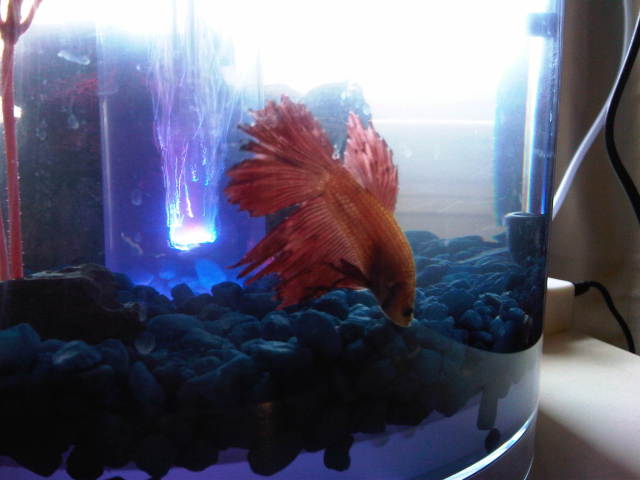 betta - color fading/fringed fins
Question
betta
Let me just start by saying I have recei
betta - color fading/fringed fins
Question
betta
Let me just start by saying I have recei
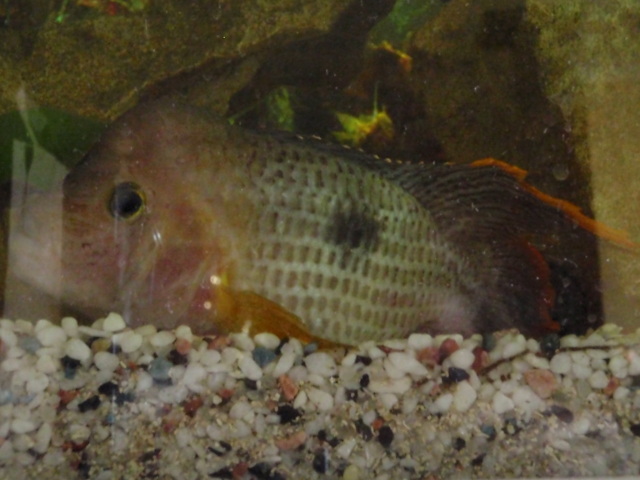 Sinking Green Terror
QuestionGreen Terror Sitting
QUESTION: Hi Ron,
Sinking Green Terror
QuestionGreen Terror Sitting
QUESTION: Hi Ron,
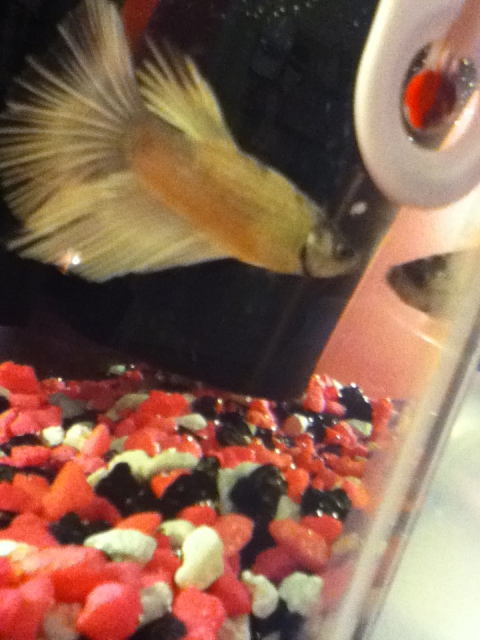 Beta Friends?
Question
This is Gunther
Hi there,
Just a quick
Beta Friends?
Question
This is Gunther
Hi there,
Just a quick
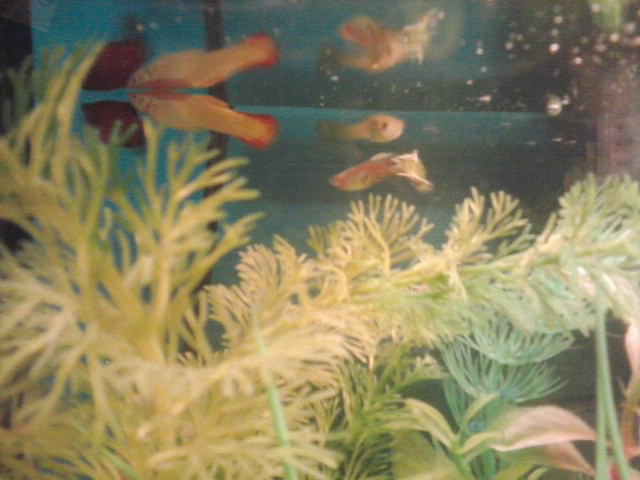 Not sure what to do
QuestionQUESTION: Hi, I have 2 platies a male and a fem
Not sure what to do
QuestionQUESTION: Hi, I have 2 platies a male and a fem
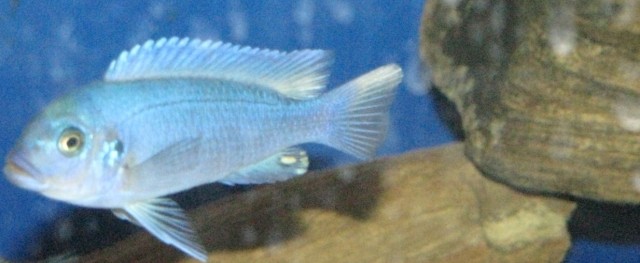 fish spots on tail
Question
IMG0474
i have a 100 gallon tank with cichlid
fish spots on tail
Question
IMG0474
i have a 100 gallon tank with cichlid